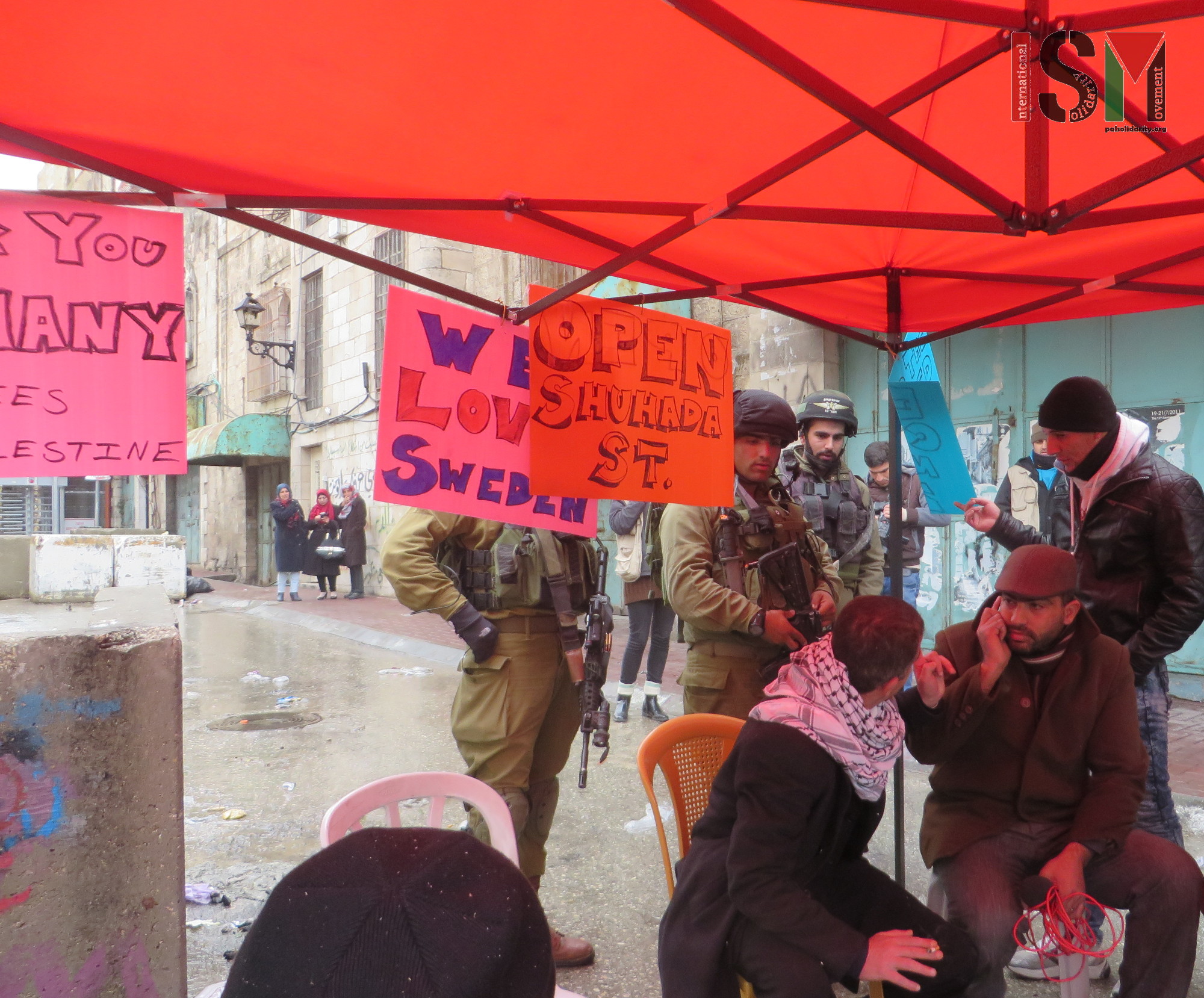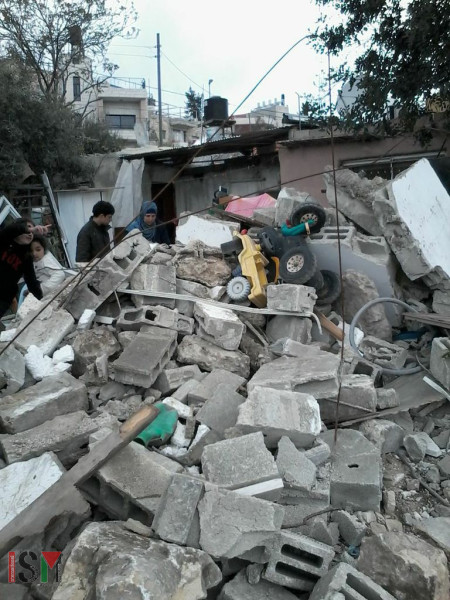Category: Features
-
Demonstrators protest closed military zone under threat of Israeli violence
8th February 2016 | International Solidarity Movement, al-Khalil team | Hebron, occupied Palestine On 8th February 2016, Israeli forces threatened to attack a peaceful demonstration in front of Shuhada checkpoint in occupied al-Khalil (Hebron). Protesters gathered at noon to protest the continued closure of the Tel Rumeida neighbourhood, that on the 1st of November 2015…
-
Jerusalem family threatened with demolition order
8th February 2016 | International Solidarity Movement, al-Quds team | Jerusalem, occupied Palestine Israeli authorities on 2nd February 2016 issued a demolition order for the fence and gate surrounding the Amro family’s home in Wadi al-Joz in occupied East Jerusalem. The family was given 48 hours to remove the fence and gate before an imminent…
-
100 days of collective punishment for Hebron residents
7th February 2016 | International Solidarity Movement | Hebron, occupied Palestine February 8th marks one hundred days since Israeli forces declared the Tel Rumeida neighborhood and the adjacent portion of Shuhada Street a “closed military zone,” requiring residents to register with the Israeli military and be assigned numbers in order to be allowed to access…



